100 Film Favorites – #13: The Fall
(Tarsem, 2006)
“I can do what I want! It’s my story!”
“It’s MY story, too!”
Today’s selection is the most recent addition to the Countdown (I saw it for the first time at the 2013 W&M Global Film Festival in February), so its position may be likely to change with time. However, my first viewing of the film so impressed me that The Fall skyrocketed almost to the top of this list.
The movie’s frame story is set “once upon a time in Los Angeles,” at an area hospital in the early days of film-making (it’s implied to be the late nineteen-teens). Two patients, one a motion picture stuntman with a broken leg, and the other a young Romanian girl with a broken arm, befriend one another during their time at the ward. Roy, the stuntman, intrigues Alexandria, the little girl, by beginning to tell her a tale of her “namesake,” Alexander the Great. “Once,” the stuntman begins, “Alexander, the legendary warrior, was terribly lost…” Abruptly, we are confronted with a sweeping panorama of ancient Greek architecture as Alexander tromps through with his army, the story coming to life as Roy relates it. True movie magic ensues when Alexandria asks how Alexander could truly be lost if he were in the middle of a city, and Roy amends his story: “Well, actually, they were lost amid the orange sands of a vast desert.” Alexander turns around, and in an apparently seamless transition, the Greek ruins are suddenly replaced with endless desert dunes stretching to the horizon. When Alexandria is pulled away by one of the ward’s nurses/nuns, Roy promises that when next they meet, he will tell her another story…a better story…an “epic.”
Alexandria does return, and Roy begins his epic, about five men who have each sworn revenge on the villainous “Governor Odious.” The heroic party of “bandits” consists of an Indian swordsman, a former African slave skilled with a bow, an Italian explosives expert (I wonder if “Tarsem” has seen Atlantis: The Lost Empire), a surreal version of Charles Darwin (whose theories actually originate from the mind of his pet monkey, Wallace), and the group’s leader, the enigmatic Red Bandit. The five adventurers are later joined by an old, powerful “mystic,” and all six band together to track down and destroy the evil Odious.

Darwin, the Indian, the Bandit (sometimes he’s Red, sometimes Blue), Luigi the explosives expert, and the Slave.
Most of the film alternates between scenes of Alexandria’s experiences at the hospital and scenes set in the world of Roy’s ongoing tale. Through Alexandria’s exploration of the ward, we gradually learn about Roy’s past, and see how his experiences influence the direction of the story he tells. In reality, Roy injured himself jumping from a train trestle for a film stunt. He subsequently learns that his girlfriend has left him to be with the star actor for whom Roy had been doing the stunt-work. Heartbroken, and fearing he may be paralyzed, Roy has sunk into a deep depression. It is revealed that Roy has ulterior motives for befriending Alexandria: he hopes that he can convince her to smuggle him morphine…hopefully in a quantity large enough for him to kill himself with. However, in her first attempt Alexandria returns with only three pills (having mistaken the “E” at the end of Roy’s requested “MORPHINE” for a “3”). Then, when she does manage to procure a whole bottle, it turns out to be filled with placebo pills. The repeated failures drive Roy deeper into despair, and he remains intent on committing suicide, despite Alexandria’s beginning to love and regard him as a father figure.
As in The Wizard of Oz, Labyrinth, and The 5,000 Fingers of Dr. T, characters from the “real world” re-appear in different roles within the fantasy realm of the inner story. For instance, the former slave is played by the same actor as the hospital’s ice delivery man, and the explosives expert by the same actor as one of Roy’s stuntman colleagues. An elderly patient who advises Alexandria not to be afraid, even if she sees scary things around her at the hospital, becomes the wise mystic in Roy’s tale. Most notably, Roy himself plays the role of the Red Bandit, “Odious” is the movie star who “stole” his girlfriend, and the ex herself is Odious’ queen, depicted at turns as an unwilling captive and an icy manipulator as the story shifts and morphs.
In Alexandria’s third attempt to get the morphine, she climbs onto a high shelf and slips on a glass bottle, cracking her head on the floor. She is seriously hurt and undergoes surgery, but eventually makes a full recovery. Distraught to think he caused Alexandria’s accident, Roy becomes even more despondent. He reveals that the story was a ruse all along, intended to manipulate Alexandria into getting the pills. Now wishing to put an end to the story as well as himself, Roy begins killing off his characters one by one, much to Alexandria’s tearful dismay. Just as Roy is about to let Odious finish him off, stating that he can do whatever he wants in “his story,” Alexandria asserts that this is her story, too. In the world of the story, her character (the bandit’s daughter) yells for her downed “father” to find his strength and fight back. At the last moment, the Bandit/Roy stands up to Odious and fights him off. The manipulative girlfriend/queen states that the whole ordeal was a “test,” to see if the Bandit really loved her. He rebuffs the shallow queen and hugs his daughter close, as Odious falls on his own sword.
The film closes with narration by Alexandria, who says that Roy eventually recovered and went back to stunt-work, and that whenever she would see “hitting, or climbing, or falling” in the great films of the silent age, she knew “it was Roy.”
Before seeing The Fall, I thought of director “Tarsem” as “that artsy-fartsy weirdo who made The Cell.” Indeed, The Fall was only Tarsem’s second feature film, the first to follow 2001’s The Cell, and Fall does bear some of the hallmarks of its predecessor. For instance, one gets the sense that, in these films, striking visuals and attempts at “deep,” profound symbolism take precedence over things like a cohesive storyline or clear tone. There’s a feeling that the artistically-minded single-name-haver Tarsem strove to make every shot as epic and beautiful as possible, not to convey a message or advance the narrative, but simply to show off his expert abilities as a cinematographer.
That said, what The Fall does well it does like no other film I’ve ever seen. It’s hard to come up with words which even approach the majesty of the different locations captured as settings for Roy’s epic. The visuals in this film are breathtaking. Eye-popping. Literally every frame of the fantasy sequence could be a calendar page, motivational poster or default desktop background.
The almost surreal beauty and grandeur of the film is due not only to Tarsem’s discerning eye, but also to the movie’s highly unusual production schedule. The film was made over the course of more than four years, and features scenes in the most pristine corners of a whopping twenty-four different countries. You see, Tarsem derives most of his income from directing commercials rather than feature films. Making commercials is a job which has Tarsem flying all over the world to conduct shoots, and so over the course of four years he simply shot beautiful footage in each of the myriad countries through which he passed.
In arguably the most spectacular scene in the film, the mystic eats a map, not heeding Darwin’s warning that the ink with which it is printed is poisonous. The mystic leads the crew of “bandits” to his tribe before collapsing. As the other natives chant around the fallen form of their writhing comrade, map-like markings begin appearing all over the mystic’s skin. “He’s giving us directions,” one of the adventurers remarks. As the natives’ chant accelerates, and the cryptic cartographic lines zip across the mystic’s chest, we see short shots of our heroes journeying past the many landmarks indicated on his body. The pyramids of Giza give way to the Great Wall of China, to the ruins of Angkor Watt, to the Eiffel Tower, to the Statue of Liberty. All the while, the pace of editing grows faster and faster to match the natives’ rapid chanting. To think that one crew actually journeyed to all those different locations really highlights what an undertaking this film must have been in comparison to other films with only a handful of locations.
What’s even more remarkable is that, no matter how otherworldly the various settings may seem, virtually every location depicted is a real place. It’s reassuring and even inspiring to discover that there are places on Earth that look magical, even without the aid of Photoshop or other visual editing tricks. This globe-trotting sequence is truly one for the history books, and likely part of what motivated Roger Ebert to write that people should see The Fall solely “because it exists…there will never be a movie like it again.”
More broadly, I love the film’s focus on storytelling and how it works. I mentioned in the Merlin post how much I enjoyed the Hallmark adaptation of Arabian Nights. Well, The Fall is essentially the same story as Arabian Nights, save that in Nights Scheherazade must keep the sultan interested in her story to prevent him from killing her, while in Fall Alexandria must keep Roy telling his story to prevent him from killing himself. In another deviation from Nights, It’s refreshing to see a child take the reins of the story every now and again. Indeed, this “interactive” aspect goes hand-in-hand with the film’s visual excellence. The magic of the film’s visuals is enhanced tenfold every time Alexandria interrupts to “correct” the story, and the world instantaneously changes around the characters, one amazing vista melting away to be replaced with another, equally as stunning.

And we’re talking the extremest of Extreme Long Shots: Those are people down in the right-hand corner there.
The film marks the debut of Catinca Untaru, the six year-old Romanian actress who plays Alexandria. She delivers a charmingly authentic performance, due in part to the fact that the filmmakers largely let her be herself. Many of her lines were improvised, and her interactions with other actors were spontaneous and genuine. To enhance this sense of verisimilitude, many of Untaru’s scenes with Roy in his hospital bed were filmed with unobtrusive cameras peeking in through the curtains, to make the situation feel more real than staged. Furthermore, Tarsem had Roy’s actor, Lee Pace, remain in bed throughout the production of the hospital scenes, to convince Untaru (and much of the crew as well) that he really was crippled.
The Fall may not be a “perfect film,” but it’s an under-appreciated gem overflowing with cinematic beauty, and it offers a captivating visual depiction of how storytelling works. When there is interaction between the storyteller and his audience, whole worlds can change in an instant.
—
Brian Terrill is the host of television show Count Gauntly’s Horrors from the Public Domain. You can keep up with Brian’s 100 Film Favorites countdown here.


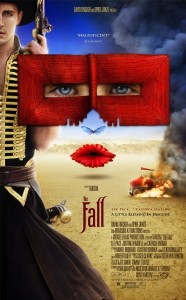
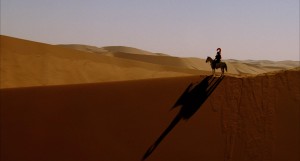

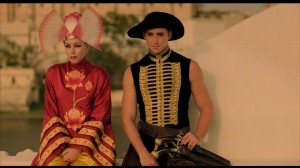

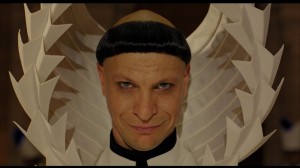
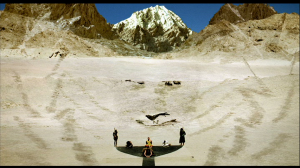

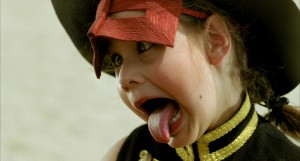
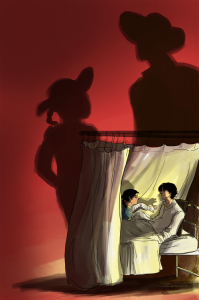



The landscape has morphed into Facebook Fan pages, check ins, and, likes and unlikes.
Affiliate marketing may be the method of sales for the reason that vendors are allowed to hire outside parties called affiliates
to assist support their products. City residents and
visitors can see the best that an urban area has to offer by reading local
and regional news aand events directly on their
computer or on the mobile devices.
Pingback: Good movies, great costumes! | The Daily Geekette
Pingback: “The Fall” is a Picturesque Work of Art on film – Bold & Balanced
very nice post, i definitely love this website, carry on it